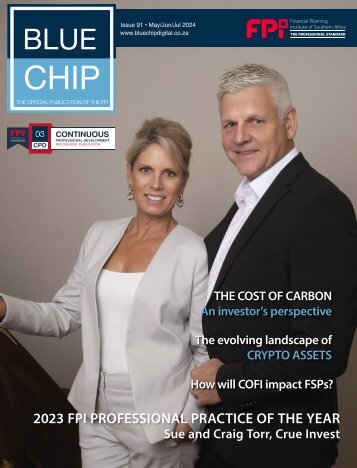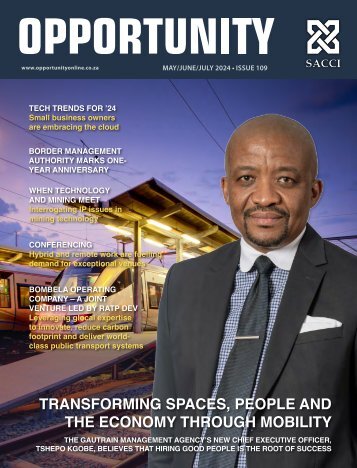South African Business 2016 edition
- Text
- Investment
- Government
- Business
- Development
- Network
- Sectors
- Investing
- Business
- Africa
- African
- Economic
- Manufacturing
- Mining
- Opportunities
- Economy
- Overview
Mpumalanga: Key Sectors
Mpumalanga: Key Sectors Mpumalanga is one of South Africa’s most productive and important agricultural regions. It also offers an ideal climate and topography for forests, major mineral resources, formidable manufacturing capacity as well as a sophisticated and well-segmented tourism sector. METAL ORES 6.7% GOLD & URANIUM 3.1% OTHER MINING & QUARRYING 6.8% MINING Mpumalanga exports over US-million of macadamia nuts annually. The mining sector accounts for a quarter of all economic activity in the province and is also the largest single sector, providing employment to 25% of the province’s workforce. The major mining activity in the province is centered on the coal and lignite industry. Mpumalanga contributes 83% of all coal produced in South Africa, making it the world’s third-largest coal-exporting region. Towns such as eMalahleni (Witbank) and Middelburg in the Nkangala District Municipality are at the centre of the coal-mining industry. Structure of the mining sector in Mpumalanga 2014 COAL AND LIGNITE 83.4% Mpumalanga’s coal-mining industry is developing as a significant attractor of both foreign and local direct investment in the province. A significant percentage of the province’s coal is exported to countries such as China, India, South Korea and Japan. AGRICULTURE About 14% of the province’s land area is natural grazing land which is used in the production of beef, mutton, poultry, dairy and wool. The Mbombela district in the Lowveld is South Africa’s second-biggest producer of citrus fruit, while more than half of South Africa’s soya bean crop is produced in Mpumalanga’s Highveld areas. The agriculture sector in Mpumalanga can be divided into two broad categories: • SUMMER CEREALS AND LEGUMES This consists of maize, soya, canola and sunflower that has – in the main – been cultivated in the Highveld region of the province. • TROPICAL, SUBTROPICAL AND CITRUS FRUIT, NUTS AND CANE SUGAR These are mainly cultivated in the Lowveld region of the Province. AGRICULTURE & HUNTING 58% FISH FARMS 0.5% FORESTRY & LOGGING 41.5% Mpumalanga is one of South Africa’s most productive and important agricultural regions and plays a key role in the export profile of South Africa, primarily in fruit and nuts. Structure of the agriculture sector in Mpumalanga 2014 10 000 000 The region exports over 10 million cartons of avocados annually. 1/4 About a quarter of SA’s tobacco crop is cultivated in Mpumalanga. R950-million Turnover from subtropical fruit, which employs about 13 000 people. 80% Mpumalanga generates 80% of South Africa’s energy. 4 Number of major pipeline networks that pass through Mpumalanga. 120-mill ton Mpumalanga supplies 80% of South Africa’s stainless-steel needs.
MANUFACTURING There are two primary pillars of the manufacturing sector in Mpumalanga, and these account for in excess of 75% of the output for this sector: • Fuel, petroleum and chemical products • Metal, machinery and appliances The fuel, petroleum and chemical products manufactured in Mpumalanga are essentially synthetic fuel and its byproducts, which are produced from coal in the Highveld region of the Province. The other major components of the manufacturing sector are the Ferro-Alloy, Steel and Stainless Steel industries based in eMalahleni (Witbank) and Middelburg in the Nkangala District Municipality. Agro-processing is centred primarily in the Lowveld region of Mpumalanga and it makes a valuable contribution to the provincial economy’s manufacturing sector. Agro-processing is centred around processing the vast amounts of tropical and subtropical fruit and nuts cultivated in the Lowveld. Mpumalanga has a diverse manufacturing sector that accounts for 15% of provincial GGP, in addition to an expanding retail sector. WOOD & WOOD PRODUCTS 6.2% FOOD, BEVERAGE & TOBACCO PRODUCTS 10.7% METAL, MACHINERY & APPLIANCES 25.5% OTHER MANUFACTURED PRODUCTS 7.0% Structure of the manufacturing sector in Mpumalanga 2014 FUEL, PETROLEUM & CHEMICAL PRODUCTS 50.7% Most of the nation’s power stations are located in Mpumalanga, and three previously mothballed power stations have recently been reopened. FORESTRY The forestry sector comprises logging, saw-milling, wood products, pulp and paper as well as specialised cellulose for global markets. Pulp, paper and specialised cellulose are the main exports, along with sawn lumber, wood chips and wattle extract. The industry is ideal for recycling initiatives. The forestry products sector continues to contribute about 1% to national GDP, with the Far East, Europe and the UK making up its major export markets. The export market for pulp and paper from South Africa remains strong and, buoyed by better margins, pulp production figures have been on the rise since 2007. Global paper giants Sappi, Mondi and SAFCOL have extensive plantations and mill operations in the province, which is home to Africa’s biggest integrated pulp and paper mill. Attractive opportunities exist for small-scale growers, contractors and sawmillers, while forested areas also lend themselves to beekeeping and honey-making. Mpumalanga’s forestry sector accounts for 12.3% of South Africa’s agricultural GDP. Mpumalanga has the ideal climate and topography for forests, with South Africa’s biggest sawmill and largest panel and board plant. TOURISM Mpumalanga boasts world-class parks and reserves, astonishing botanical gardens, rivers and lakes. Safaris are a major drawcard, and the Kruger National Park is the jewel in South Africa’s tourism crown, while subsectors such as business travel (including conference facilities), adventure, heritage and cultural tourism all hold huge growth potential. The casino industry in particular has enjoyed great growth and shows signs of further potential for additional investment. In addition to the establishment a Provincial Liberation Heritage Route, priority investment projects that have been highlighted include: • A cable car over a part of the Blyde River Canyon. • A cantilevered glass walkway at God’s Window. • An International Convention Centre (ICC) in the capital, Mbombela. South Africa’s third mostvisited province, Mpumalanga has a sophisticated and well-segmented tourism sector attracting both foreign and local investment interest. The world’s most luxurious private game lodges are located around Kruger. 70% 30 million 11% R40-billion 9 R2-billion The percentage of manufacturing jobs in food and forestry. The volume of water treated every day by local water authorities. The total land area covered by plantations or natural forests. . The annual value of the South African forestry industry. Number of scheduled flights departing KMIA on a daily basis. The value that Kruger brings to the South African national economy.
- Page 1:
SOUTH AFRICAN BUSINESS 2016 EDITION
- Page 6:
CONTENTS Introduction CONTENTS Sout
- Page 10 and 11:
CREDITS Publisher Chris Whales Publ
- Page 12 and 13:
SPECIAL FEATURE South Africa A peri
- Page 14 and 15:
SPECIAL FEATURE In a year that saw
- Page 16 and 17:
SPECIAL FEATURE owes its existence
- Page 18 and 19:
SPECIAL FEATURE against water losse
- Page 20 and 21:
SPECIAL FEATURE Operation Phakisa h
- Page 22 and 23:
SPECIAL FEATURE late in 2014. The h
- Page 24 and 25:
SPECIAL FEATURE Understanding Afric
- Page 26 and 27:
INTERVIEW Job creation on track Ala
- Page 28 and 29:
SPECIAL FEATURE Business funding Th
- Page 30 and 31:
SPECIAL FEATURE in turn makes it ve
- Page 32 and 33:
SPECIAL FEATURE Contact: 012 394 18
- Page 34 and 35:
SPECIAL FEATURE Black Business Supp
- Page 36 and 37:
SPECIAL FEATURE The evolution of sk
- Page 38:
SPECIAL FEATURE providing TVET lear
- Page 42:
PROFILE FP&M Seta Facilitating and
- Page 45 and 46:
• The development of a national s
- Page 48 and 49:
FOCUS Champions of change Five dyna
- Page 50 and 51:
SPECIAL FEATURE The top law firms S
- Page 52 and 53:
SPECIAL FEATURE Keeping the BRICS t
- Page 54 and 55:
SPECIAL FEATURE Keeping BEPS in che
- Page 56 and 57:
SPECIAL FEATURE IPAP in action In 2
- Page 58 and 59:
FOCUS THERE’S NO END TO THE BENEF
- Page 60 and 61:
INTERVIEW The riches of Africa awai
- Page 62 and 63:
INTERVIEW and it could actually be
- Page 64 and 65:
PROFILE ECIC exco profiles Profiles
- Page 66 and 67:
INTERVIEW The hub of Africa Tim Har
- Page 69 and 70:
Key sectors Overview of the main ec
- Page 71 and 72:
OVERVIEW from the subsistence farme
- Page 73 and 74:
OVERVIEW South Africa produces abou
- Page 75 and 76:
South Africa’s looming energy gap
- Page 77 and 78:
How will these resources be develop
- Page 79 and 80:
Vall exclusive economic zone limits
- Page 82 and 83:
OVERVIEW NEED PIC Mining The South
- Page 84 and 85:
OVERVIEW Mineral beneficiation The
- Page 86 and 87:
PROFILE The Council for Geoscience
- Page 88 and 89:
OVERVIEW Energy The South African e
- Page 90 and 91:
INTERVIEW Cummins South Africa Cumm
- Page 92 and 93:
OVERVIEW Manufacturing Increasing m
- Page 94 and 95:
OVERVIEW Automotive International i
- Page 96 and 97:
OVERVIEW Automotive components Incu
- Page 98 and 99:
OVERVIEW Chemicals and pharmaceutic
- Page 100 and 101:
OVERVIEW Healthcare South Africa’
- Page 102 and 103:
OVERVIEW Water Severe water restric
- Page 104:
OVERVIEW Improving quality The intr
- Page 107 and 108:
Our Vision is is “Quality water f
- Page 109 and 110:
OVERVIEW 107 SOUTH AFRICAN BUSINESS
- Page 111 and 112:
OVERVIEW airports in India and Braz
- Page 113 and 114:
affords, while maintaining its envi
- Page 115 and 116:
kets, except Australia. In Africa,
- Page 117 and 118:
Rosebank, Johannesburg, renamed ‘
- Page 119 and 120:
Trade with Africa Improved infrastr
- Page 121 and 122:
FOCUS MTN plugs R1.2-billion into K
- Page 123 and 124:
MTN rolls out fibre infrastructure
- Page 125 and 126:
OVERVIEW community engagement. The
- Page 127 and 128:
PROFILE For BEE Verification and is
- Page 129 and 130: OVERVIEW attracting and retaining c
- Page 131 and 132: OVERVIEW Small business is taken ve
- Page 133 and 134: Franchise Fund—an innovative plat
- Page 135 and 136: educating young people in fields th
- Page 137 and 138: OVERVIEW Management Plan has divert
- Page 139 and 140: hazardous waste is also not being c
- Page 141 and 142: INTERVIEW yourself up as a Tier 1 o
- Page 144 and 145: OVERVIEW Renewable energy South Afr
- Page 146 and 147: INTERVIEW Plenty of scope for solar
- Page 148 and 149: LISTINGS South African business org
- Page 150 and 151: LISTINGS South African National Gov
- Page 152 and 153: LISTINGS Department of Communicatio
- Page 154 and 155: LISTINGS Department of Human Settle
- Page 156 and 157: LISTINGS Department of Science and
- Page 158 and 159: OVERVIEW Regional overview: Eastern
- Page 162 and 163: INTERVIEW Buffalo City on the rise
- Page 164 and 165: OVERVIEW Regional overview: Free St
- Page 166 and 167: OVERVIEW Regional overview: Gauteng
- Page 168 and 169: FOCUS A Catalyst for Economic Devel
- Page 170 and 171: FOCUS business people and tourists
- Page 172 and 173: OVERVIEW Regional overview: KwaZulu
- Page 174 and 175: OVERVIEW Regional overview: Limpopo
- Page 176 and 177: OVERVIEW Regional overview: Mpumala
- Page 178 and 179: The powerhouse of Africa Mpumalanga
- Page 182 and 183: Nkomazi Special Economic Zone The N
- Page 184 and 185: INVEST IN THE PROVINCE OF THE RISIN
- Page 186 and 187: OVERVIEW Regional overview: Norther
- Page 188 and 189: OVERVIEW Regional overview: North W
- Page 190 and 191: OVERVIEW Regional overview: Western
- Page 192 and 193: FOCUS Khayelitsha - the power of to
- Page 194 and 195: INDEX INDEX Abeco Tanks ...........
- Page 196: ENSafrica.com ENSafrica | Africa’
Inappropriate
Loading...
Mail this publication
Loading...
Embed
Loading...























































































































































